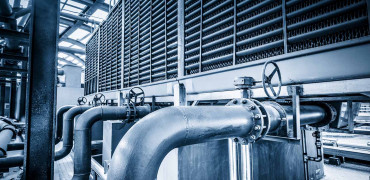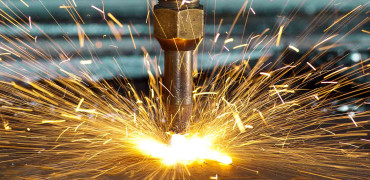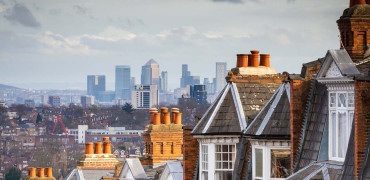Facilities management teams have a crucial role to play in the life of equipment in a building. That includes managing its ‘end of life’.
Unfortunately, large commercial equipment is not yet legally required to be recycled, so when chillers or boilers are replaced, old equipment can end up in landfill.
Not only does this create significant amounts of pollution, but many corporate building tenants and owners have sustainability policies in place that seek to minimise waste.
A building’s embodied carbon includes carbon emitted from equipment disposal
Re-use to reduce waste
The circular economy is increasingly referenced in the built environment. It means that resources are re-used as much as possible to reduce waste.
Another element of the circular economy principles is that we make the most of resources, optimising their use across their lifetime.
Many companies are adopting policies that support the principles of the circular economy.
For example, one of Mitsubishi Electric’s key initiatives is to 10% or more recycled plastics in our products and packaging by the end of 2024.
Start early
For a building’s service and maintenance team, planning for a product’s end of life starts long before the equipment has to be replaced.
For example, specification can include considerations of the materials used in a product, including its recyclability.
Durable products with a long life are obviously a good choice, but it is equally important to think about how easily materials can be retrieved from a product when it reaches end of life.
In many ways, this approach fits in perfectly with the role of facilities teams because service and maintenance are key to optimising a product’s lifetime performance.
One of the principles for Mitsubishi Electric’s Service & Maintenance team is to extend the lifetime of our customers’ equipment.
Keeping regular
Today’s HVAC products are robust and built to last, but just like a car, they require regular maintenance.
Without that support, equipment such as chillers not only performs at less than its best, but also costs more to run – and reaches its end-of-life sooner.
Regular system check-ups that include refrigerant levels and online system permanence checks are just some of the steps our engineers take to optimise equipment for many years.
So encompassing the principles of reducing waste can also enhance energy efficiency and reduce operating costs.
Carbon reduction
Perhaps one of the most important drivers to greater consideration of end-of-life for building products is carbon reduction.
As the UK Green Building Council (UKGBC) points out: “Embracing circularity during all phases of a building’s life cycle can lead to carbon reductions as well as reduction in waste and material extraction.”
The embodied carbon of a building includes carbon emitted when equipment in it is disposed of.
As more clients adopt carbon reduction policies, the lifecycle of every product in our buildings will be under more scrutiny.
Designing, specifying and maintaining for optimisation of buildings -and HVAC systems – can reduce carbon emissions at every stage of a building’s life.
We can help
As a manufacturer, Mitsubishi Electric is dedicated to making our products work in a circular economy. This includes reducing the amount of materials in the products and reducing waste along our supply chain.
Our Service & Maintenance team can work with you to develop an end-of-life plan for HVAC equipment, and to optimise their performance in your buildings.
By working together, we can help you make the most of your investment in equipment and ensure a smooth transition when the time comes to replace it.
Kris Swiderski is Head of Service and Maintenance




